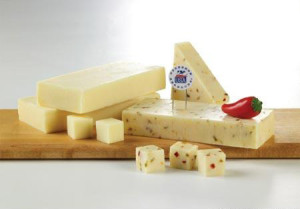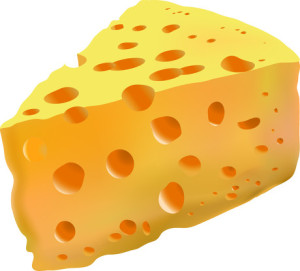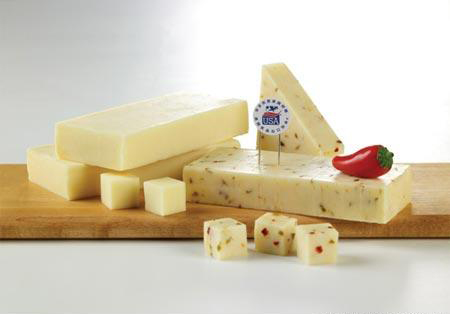China’s Cheese Market
China’s Cheese Market
Background China’s cheese market

China’s rapid economic growth in the last 30 years has both direct and indirect impact on the local Cheese market. From a country that traditionally had no dairy in its diet with very small base of consumers (mainly foreigners) to a country that enjoyed the fastest cheese market growth in the world. The recently released customs figures show that China’s cheese market and total cheese import volume reached 47,316 tons in 2013, representing a 22% increase in comparison to 2012 and a 106% increase in comparison to 2010. That provides indication on the expending status of the Chinese Cheese market.
During the early 1990s, Cheese products were not only hard to find but also were considered a real luxury in the Chinese Mainland. However, the growing number of foreigners in China’s biggest cities and their appetite for familiar food products led importers to begin placing large orders for cheese to facilitate the growth in demand on the China’s cheese market. By that time, while many Chinese may have known the word “nailao” (奶酪), which literally means “milk jelly”, only few had tried it.
Beside the growing number of foreigners, the economic growth drove Western fast food chains such as McDonald’s and Pizza Hut to begin expanding their business across China. The growing popularity of this Western Fast Food chains and the vast use of cheese in their products had stimulated the interest of Chinese people in Cheese and indirectly the Cheese market in China. Following the success of the Western fast food Chains, more and more bars, cafes, bakeries, high class restaurants and hotels also offered western food thus, the Chinese consumer’s exposure to Cheese continued to grow. In accordance to the “Modernization Theory”, China’s economic growth also led the Chinese consumers to pay greater attention on health and food safety and quality. Given cheese has high levels of protein and calcium, it was perceived by many as a healthy food, especially for children. The 2008, “Sanlu” melamine scandal, has strengthen the Chinese awareness for food safety, thus, many Chinese consumers who were looking for a high quality and safe dairy products preferred major western brands.
Additionally, the rapid economic growth led to increase of the middle-class expansion and to fast urbanization. Both processes contributed to the growth of China’s cheese market. First, as the disposable income was getting bigger, consumers are willing to spent more money on food and to taste new unfamiliar foods. Secondly, while in villages the exposure to cheese products and western restaurants is limited; in the big cities the new urban people will have great exposure to Cheese, thus the target consumers segment getting bigger.
Patterns and trends of the Product, Competitors and customers on China’s cheese market
The Product

The supply in China’s Cheese market can be divided into two main groups: processed Cheese (“new world”) and unprocessed cheese (“old world”). The processed cheeses are made from the mixing, melting and emulsifying of natural cheeses with addition of food additives and oils. This group includes cottage cheese, cream cheese, pizza Cheese and other pasteurized cheeses. Unprocessed cheeses are obtained by fermentation of milk and curd, butter or cream with lactic acid and pressure. They can be classified according to their consistency: soft (mozzarella, camembert etc), medium hard (Blue, Gouda, etc.), hard (Edam, Cheddar, Gruyere, Emmental etc.) or very hard (Parmesan).
For now the processed cheeses match the tastes of the Chinese better than unprocessed cheese since:
1) It had been sold in western fast food chains, restaurants and hotels for more than 25 years thus, the Chinese consumers are more familiar with the taste.
2) It doesn’t have strong scent and taste.
3) It’s easier to use, for breakfast with bread, toast, crackers or snacks. The total processed cheese retail volume in China increased from 4160.0 tons in 2005 to 9636.4 tons in 2010.
Forecast sales of Cheese at retail in China by volume, released by Euromonitor, shows that processed cheeses sales are expected to grow from 18,011 tons to 33,132 tons between 2014 and 2018. It is a 16.49% annual average growth. The sales of unprocessed cheese are expected to enjoy even higher rate of growth, from 694.55 tons in 2014 to 1324.42 in 2018, with 17.6% annual average growth. While both groups are expected to enjoy growth in the next years, we can still expect the preference of processed cheeses among the Chinese consumers.
The competitors
The cheese supply in China’s market is divided between local productions and imported. After the changes that followed the “Sanlu” milk scandal and a series of other milk-quality-related incidents, the main local producers of cheese: the SOE- Bright Dairy and Food Co. Hold a 52% share of the retail cheese market in 2010. Recently the company expands its business outside China by purchasing an Australian dairy company Mundella Foods, New Zealand’s Synlait Milk Ltd and Israel’s largest Diary Company Tenuve. The recent acquisitions will gain Bright food an advanced technology, new products and knowledge of international experts. Other local main companies are Mengniu Dairy co , which is a joint venture between Danone and Arla with 9.9% and 5.3% shares respectively and a local SOE, and the private company Yili Group. This Chinese cheese manufactures are produce processed cheeses only.
New Zealand, Australia, and the United States, are the top three biggest cheese exporters to China with over 80 percent of the market, thanks to their relatively early entrance to China and their focus on processed cheese. In 2013, the cheese import was dominated by New Zealand (45%), Australia (25.5%), US (23%), France (3%) and Italy (2.5%). Additionally, companies from New Zealand are also enjoying the advantage of having bilateral Free Trade Agreements with China and great reputation, thus, it is not surprising that the New- Zealand based company Fonterra, holds 18% of China’s market.
French companies such as La Vache qui rit, Président and Milkana were also holding great sales performance when they doubled their total sales from 400 ton to 800 ton, between 2009 and 2011, but they still fall behind New Zealand, US and Australia.
Given the sales forecast of Unprocessed Cheese, the local companies focus on Processed cheese and, the European countries long tradition of producing Unprocessed Cheese, we might see companies from France, Italy, Spain and Germany focus on the Unprocessed Niche market.
The customers
Western fast food and Western desserts such as pasta, hamburgers, pizza and cheesecake are becoming more and more popular, and are in large part responsible for stimulating Chinese people’s interest and taste for cheese. However, China’s yearly consumption of cheese per capita is still very low – 250 grams compared to the French consumption of 26kgs per person per year or the yearly Australian consumption of about 12kgs per person. It is important to emphasize the fact that core growth within the Cheese market is restricted to the selected urban centres – Shanghai (35%), Beijing (23%), Guangzhou (22%) and Tianjin (8%). The situation where 4 cities accounting to 88% of the market growth highlights the great sales potential companies will enjoy outside those cities. Other figures that emphasize the sales potential are the consumers’ distribution. 60% of cheese in China is consumed by hotel guests, 25% by the chain markets, 10% are used by dessert making-related firms. And the rest is used by others.
While recent projections expect China’s growth rate to decline to 7%, it will not have effect on the Chinese consumers. As part of the plan to restructure the economy from export oriented to domestic consumption oriented, the central government initiated few policies and laws, including the raise of the minimum salary, which will promise the ongoing middle class expansion and urbanization. ” The Chinese diet is changing along with the increase in middle class and high net-worth individuals,” said Tiffany Pan, a communications officer at Ole, thus “demand for taste and delicious food continues to grow”.
Major Points:
- China’s growing middle class, the Urbanization, the growing attention to healthy and safe food and motivation of many Chinese for a more European consumption lifestyle assure the growing demand of Cheese in the next years.
- Latecomers should find their Niche. French companies might focus on the relatively undeveloped unprocessed Cheese market while Israeli Companies which are well known due to their low fat and high calcium Chesses might focus on the processed healthy market.
- The gap between per capita spending on cheese between China and Western countries highlights the considerable potential in the market.
- FTA provides competitive advantage.
- The big sales potential outside than first tier city depends upon investment in familiarizing consumers with cheese via marketing and widening distribution.
- Food Safety might give a competitive advantage for foreign firms.
- China’s alleviation of its one-child policy, allowing certain families to have a second child, might add another 700,000 mouths to feed per year. As cheese is perceived as healthy food, the demand could increase in the future.
- Companies must consider the adjustments of its products flavor to suit the taste of Chinese consumers.
- As a country that traditionally had no dairy in its diet, about 92% of Chinese have some form of lactose-intolerance and 40% among children aged 7 to 13.
- Foreign companies must be aware on the possibility of IPR violations (for example the brand “Happy Cow” which is a copy of “The Laughing Cow”).
- The proliferation of local Chinese Cheese producers or workshops, such as Le Fromager de Pékin, demonstrates the cheeses growing demand.
References
http://www.chinadaily.com.cn/china/2012-11/27/content_15964575.htm
http://www.chinaeconomicreview.com/all-cheese-china
http://www.cheesemarketnews.com/guestcolumn/2014/13jun14_01.html
http://theconversation.com/after-wine-chinese-consumers-want-a-slice-of-cheese-19036
http://www.asiaperspective.net/chinas-increasing-appetite-imported-food-beverage/
http://www.transparencymarketresearch.com/global-cheese-market.html
http://daxueconsulting.com/market-research-on-where-to-buy-cheese-and-who-buy-cheese-in-china/
http://www.scmp.com/magazines/money/article/1264320/say-cheese
http://www.asiaperspective.net/chinas-increasing-appetite-imported-food-beverage/






![[Podcast] China Paradigm 43: How to make a profitable e-commerce store in China](../wp-content/uploads/2019/06/e-commerce-store-China-podcast-150x150.jpg)








